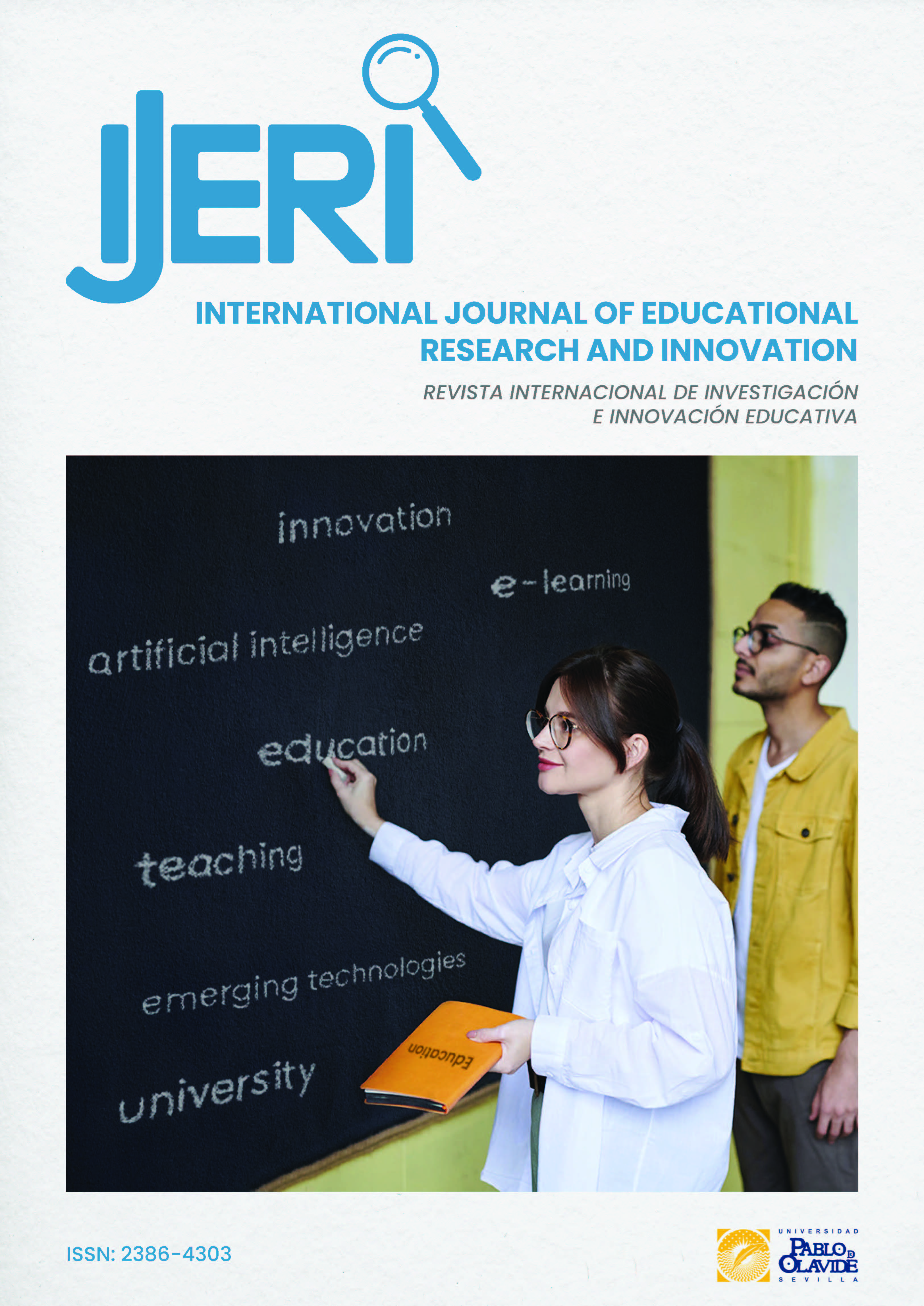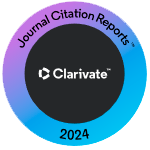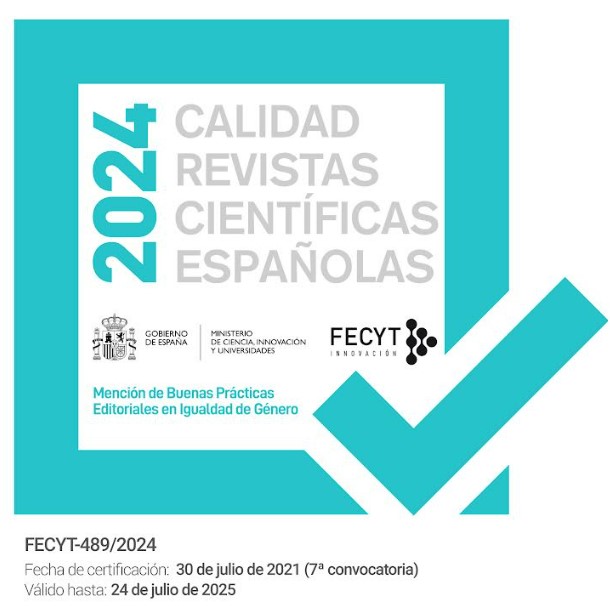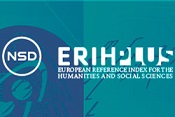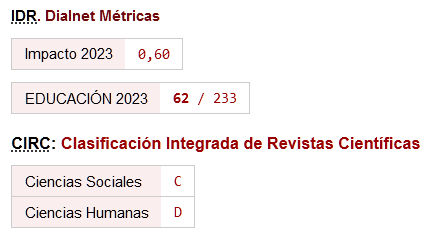Research on the antecedents of burnout syndrome in researchers at public universities in China
A PLS-SEM approach
DOI:
https://doi.org/10.46661/ijeri.10885Keywords:
Psychosocial Safety Climate (PSC), Work-Family Conflict (WFC) , Burnout, Depression, Chinese Academic Staff, Public universitiesAbstract
With the increasing prevalence of burnout worldwide, especially in the academic field, it is particularly urgent to study the mental health of academicians in universities. Academicians in Chinese universities face heavy workloads and public expectations, which often lead to serious work-family conflicts and psychological stress, thus triggering burnout and depression. This study adopts a cross-sectional and quantitative design to explore the relationship between psychosocial safety climate and burnout based on the job demands-resources theory. Data from 600 researchers in public universities in China were collected through an online questionnaire. The data collected were analyzed using SmartPLS software. The results showed that PSC was negatively related to burnout. The study found that WFC mediated the relationship between PSC and burnout, and burnout led to depression. The results suggest that improving PSC can effectively reduce WFC and burnout, thereby reducing the risk of depression. The significance of this study is that it emphasizes the key role of organizational support in improving the mental health of academic staff. By improving the PSC, university management can help academics to better balance work and family responsibilities, reduce burnout, prevent depression, and improve overall job satisfaction and quality of life.
Downloads
References
Acker, G. M. (2003). Role conflict and ambiguity do they predict burnout among mental health service providers? Social Work in Mental Health, 1(3), 63–80. https://doi.org/10.1300/J200v01n03_05
Ahola, K., & Hakanen, J. (2007). Job strain, burnout, and depressive symptoms: A prospective study among dentists. Journal of Affective Disorders, 104(1-3), 103–110. https://doi.org/10.1016/j.jad.2007.03.004
Allen, T. D., Herst, D. E. L., Bruck, C. S., & Sutton, M. (2000). Consequences associated with work-to-family conflict: A review and agenda for future research. Journal of Occupational Health Psychology, 5(2), 278–308. https://doi.org/10.1037/1076-8998.5.2.278
Amstad, F. T., Meier, L. L., Fasel, U., Elfering, A., & Semmer, N. K. (2011). A meta-analysis of work–family conflict and various outcomes with a special emphasis on cross-domain versus matching-domain relations. Journal of Occupational Health Psychology, 16(2), 151–169. https://doi.org/10.1037/a0022170
Baeriswyl, S., Krause, A., & Schwaninger, A. (2016). Emotional exhaustion and job satisfaction in airport security officers – work family conflict as mediator in the job demands–resources model. Frontiers in Psychology, 7. https://doi.org/10.3389/fpsyg.2016.00663
Bakker, A. B., & Demerouti, E. (2007). The Job Demands‐Resources model: State of the Art. Journal of Managerial Psychology, 22(3), 309–328. https://doi.org/10.1108/02683940710733115
Carlson, D. S., Kacmar, K. Michele., & Williams, L. J. (2000). Construction and initial validation of a multidimensional measure of work–family conflict. Journal of Vocational Behavior, 56(2), 249–276. https://doi.org/10.1006/jvbe.1999.1713
Cheng, H., Fan, Y., & Lau, H. (2022). An Integrative Review on Job Burnout among Teachers in China: Implications for Human Resource Management. The International Journal of Human Resource Management, 34(3), 1–33. https://doi.org/10.1080/09585192.2022.2078991
Chin, W. W. (1998). The partial least squares approach for structural equation modeling. In Handbook of Partial Least Squares (pp. 295–336). Springer. https://psycnet.apa.org/record/1998-07269-010
Chin, W. W. (2009). How to write up and report PLS analyses. In V. Esposito. Vinzi, W. W. Chin, J. Henseler, & H. Wang (Eds.), Handbook of Partial Least Squares (pp. 655–690). Springer. https://doi.org/10.1007/978-3-540-32827-8_29
China Statistical Yearbook-2023. (2023). Www.stats.gov.cn. https://www.stats.gov.cn/sj/ndsj/2023/indexch.htm
CORTESE, C. G., COLOMBO, L., & GHISLIERI, C. (2010). Determinants of nurses’ job satisfaction: The role of work-family conflict, job demand, emotional charge and social support. Journal of Nursing Management, 18(1), 35–43. https://doi.org/10.1111/j.1365-2834.2009.01064.x
Davis, D. (2000). Business research for decision making. Duxbury Press.
Deloitte’s 2023 Gen Z and Millennial Survey Reveals Workplace Progress despite New Setbacks. (2023, June 25). Deloitte China. https://www2.deloitte.com/cn/en/pages/about-deloitte/articles/dtt-2023-gen-z-and-millennial-survey-reveals-workplace-progress-despite-new-setbacks.html
Demerouti, E., Bakker, A. B., Nachreiner, F., & Schaufeli, W. B. (2001). The Job demands-resources Model of Burnout. Journal of Applied Psychology, 86(3), 499–512. https://doi.org/10.1037/0021-9010.86.3.499
Demerouti, E., Bakker, A. B., Vardakou, L., & Kantas, A. (2003). The Convergent Validity of Two Burnout instruments: a multitrait-multimethod analysis. European Journal of Psychological Assessment, 19(1), 12–23. https://doi.org/10.1027/1015-5759.19.1.12
Dollard, M. F., & Bakker, A. B. (2010). Psychosocial Safety Climate as a Precursor to Conducive Work environments, Psychological Health problems, and Employee Engagement. Journal of Occupational and Organizational Psychology, 83(3), 579–599. https://doi.org/10.1348/096317909x470690
Dollard, M. F., Dormann, C., Tuckey, M. R., & Escartín, J. (2017). Psychosocial safety climate and enacted PSC for workplace bullying and psychological health problem reduction. European Journal of Work and Organizational Psychology, 26(6), 844–857. https://doi.org/10.1080/1359432x.2017.1380626
Dollard, M. F., Tuckey, M. R., & Dormann, C. (2012). Psychosocial Safety Climate Moderates the Job Demand–resource Interaction in Predicting Workgroup Distress. Accident Analysis & Prevention, 45, 694–704. https://doi.org/10.1016/j.aap.2011.09.042
Fiksenbaum, L. M. (2013). Supportive work–family environments: Implications for work–family conflict and well-being. The International Journal of Human Resource Management, 25(5), 653–672. https://doi.org/10.1080/09585192.2013.796314
Furlan, L. A., Cassady, J. C., & Pérez, E. R. (2009). Adapting the cognitive test anxiety scale for use with argentinean university students. International Journal of Testing, 9(1), 3–19. https://doi.org/10.1080/15305050902733448
Gefen, D., Straub, D., & Boudreau, M. (2000). Structural Equation Modeling Technique and Regression Guidelines for Research Practices. Communications of the Association for Information Systems, 4(7), 1–79. https://doi.org/10.17705/1CAIS.00407
Goh, Z., Ilies, R., & Wilson, K. S. (2015). Supportive supervisors improve employees’ daily lives: The role supervisors play in the impact of daily workload on life satisfaction via work–family conflict. Journal of Vocational Behavior, 89, 65–73. https://doi.org/10.1016/j.jvb.2015.04.009
Hair, J. F., Black, W. C., Babin, B. J., Anderson, R. E., & Tatham, R. L. (2010). SEM: an introduction. Multivariate Data analysis: a Global Perspective. 5(6), 629–686. https://www.scirp.org/reference/ReferencesPapers?ReferenceID=1839925
Hair, J. F., Hult, G. t.m., Ringle, C. M., & Sarstedt, M. (2017). A primer on partial least squares structural equation modeling (PLS-SEM). In www.scirp.org (2nd edition). Sage Publications Inc. https://www.scirp.org/reference/referencespapers?referenceid=2297757
Hair, J. F., Risher, J. J., Sarstedt, M., & Ringle, C. M. (2019). When to use and how to report the results of PLS-SEM. European Business Review, 31(1), 2–24. https://doi.org/10.1108/EBR-11-2018-0203
Hair, J., Hult, T., Ringle, C., & Sarstedt, M. (2014). A primer on partial least squares structural equation modeling (PLS-SEM). Sage Publication. https://www.scirp.org/reference/referencespapers?referenceid=1587368
Hakanen, J. J., & Schaufeli, W. B. (2012). Do Burnout and Work Engagement Predict Depressive Symptoms and Life satisfaction? a three-wave seven-year Prospective Study. Journal of Affective Disorders, 141(2-3), 415–424. https://doi.org/10.1016/j.jad.2012.02.043
Hakanen, J. J., Schaufeli, W. B., & Ahola, K. (2008). The Job Demands-Resources model: a three-year cross-lagged Study of burnout, depression, commitment, and Work Engagement. Work & Stress, 22(3), 224–241. https://doi.org/10.1080/02678370802379432
Hall, G. B., Dollard, M. F., & Coward, J. (2010). Psychosocial Safety climate: Development of the PSC-12. International Journal of Stress Management, 17(4), 353–383. https://doi.org/10.1037/a0021320
Hall, G. B., Dollard, M. F., Winefield, A. H., Dormann, C., & Bakker, A. B. (2013). Psychosocial safety climate buffers effects of job demands on depression and positive organizational behaviors. Anxiety, Stress & Coping, 26(4), 355–377. https://doi.org/10.1080/10615806.2012.700477
Idris, M. A., Dollard, M. F., & Tuckey, M. R. (2015). Psychosocial safety climate as a management tool for employee engagement and performance: A multilevel analysis. International Journal of Stress Management, 22(2), 183–206. https://doi.org/10.1037/a0038986
Idris, M. A., Dollard, M. F., & Winefield, A. H. (2011). Integrating psychosocial safety climate in the JD-R model: A study amongst malaysian workers. SA Journal of Industrial Psychology, 37(2). https://doi.org/10.4102/sajip.v37i2.851
International statistical classification of diseases and related health problems, ICD–11. (2019). Geneva: World Health Organization.
J. Beutell, N., & A. Schneer, J. (2014). Work-family conflict and synergy among hispanics. Journal of Managerial Psychology, 29(6), 705–735. https://doi.org/10.1108/jmp-11-2012-0342
Jiang, X. R., Du, J. J., & Dong, R. Y. (2017). Coping style, job burnout and mental health of university teachers of the millennial generation. Eurasia Journal of Mathematics, Science and Technology Education, 13(7), 3379–3392. https://doi.org/10.12973/eurasia.2017.00734a
Karanika-Murray, M., Michaelides, G., & Wood, S. J. (2017). Job demands, job control, psychological climate, and job satisfaction. Journal of Organizational Effectiveness: People and Performance, 4(3), 238–255. https://doi.org/10.1108/joepp-02-2017-0012
Khan, F., Rasli, A. M., Khan, S., Yasir, M., & Malik, M. F. (2014). Job burnout and professional development among universities academicians. Science International Lahore, 26(4), 1693–1696.
Kilroy, S., Flood, P. C., Bosak, J., & Chênevert, D. (2016). Perceptions of high-involvement work practices and burnout: The mediating role of job demands. Human Resource Management Journal, 26(4), 408–424. https://doi.org/10.1111/1748-8583.12112
Kock, N. (2015). PLS-based SEM algorithms: The good neighbor assumption, collinearity, and nonlinearity. Information Management and Business Review, 7(2), 113–130. https://doi.org/10.22610/imbr.v7i2.1146
Li, L. J., & Li, S. B. (2023). The effects of career calling on young university teachers’ propensity to leave: The mediating role of career commitment and the moderating role of organizational support. Higher Education Exploration, 2, 33–43.
Lu, L., Chang, T.-T., Kao, S.-F., & Cooper, C. L. (2015). Testing an integrated model of the work-family interface in chinese employees: A longitudinal study. Asian Journal of Social Psychology, 18(1), 12–21. https://doi.org/10.1111/ajsp.12081
Maslach, C., & Leiter, M. P. (2016). Understanding the burnout experience: Recent research and its implications for psychiatry. World Psychiatry, 15(2), 103–111. https://doi.org/10.1002/wps.20311
Montgomery, A. J., Panagopolou, E., & Benos, A. (2006). Work–family interference as a mediator between job demands and job burnout among doctors. Stress and Health, 22(3), 203–212. https://doi.org/10.1002/smi.1104
Reevy, G. M., & Deason, G. (2014). Predictors of depression, stress, and anxiety among non-tenure track faculty. Frontiers in Psychology, 5, 701. https://doi.org/10.3389/fpsyg.2014.00701
Salmela-Aro, K., Savolainen, H., & Holopainen, L. (2009). Depressive symptoms and school burnout during adolescence: Evidence from two cross-lagged longitudinal studies. Journal of Youth and Adolescence, 38(10), 1316–1327. https://doi.org/10.1007/s10964-008-9334-3
Sekaran, U., & Bougie, R. (2013). Research Methods for Business: a Skill-Building Approach (6th ed.). Wiley.
Shang, W. W. (2022). Job stress and burnout among ideological and political education teachers during the COVID-19 pandemic: A moderated mediation model. Frontiers in Psychology, 13, 1008854. https://doi.org/10.3389/fpsyg.2022.1008854
Sharma, E., Mazar, N., Alter, A. L., & Ariely, D. (2014). Financial deprivation selectively shifts moral standards and compromises moral decisions. Organizational Behavior and Human Decision Processes, 123(2), 90–100. https://doi.org/10.1016/j.obhdp.2013.09.001
Shin, H., Nor, H., Jang, Y., Park, Y. M., & Lee, S. M. (2013). A Longitudinal Examination of the Relationship between Teacher Burnout and Depression. Journal of Employment Counseling, 50(3), 124–137. https://doi.org/10.1002/j.2161-1920.2013.00031.x
Sun, J., Sarfraz, M., Ivascu, L., Iqbal, K., & Mansoor, A. (2022). How Did Work-Related Depression, Anxiety, and Stress Hamper Healthcare Employee Performance during COVID-19? The Mediating Role of Job Burnout and Mental Health. International Journal of Environmental Research and Public Health, 19(16), 10359. https://doi.org/10.3390/ijerph191610359
Teoh, K. B., & Kee, D. M. H. (2022). Psychosocial safety climate and burnout among Malaysian research university academicians: The mediating roles of job demands and work engagement. International Journal of Trade and Global Markets, 15(4), 471-496. https://doi.org/10.1504/IJTGM.2021.10036936
Teoh, K. B., & Kee, D. M. H. (2020). Psychosocial safety climate and burnout: The mediating role of work engagement. International Journal of Society System Sciences, 12(1), 1-14. https://doi.org/10.1504/IJSSS.2020.106946
Teoh, K. B., & Kee, D. M. H. (2019). Psychosocial safety climate and burnout: The mediating role of challenge and hindrance demands. Journal of Management and Marketing Review, 4(1), 92-99.
Veena, S. R., Gale, C. R., Krishnaveni, G. V., Kehoe, S. H., Srinivasan, K., & Fall, C. H. (2016). Association between maternal nutritional status in pregnancy and offspring cognitive function during childhood and adolescence; a systematic review. BMC Pregnancy and Childbirth, 16(1), 220. https://doi.org/DOI%2010.1186/s12884-016-1011-z
Wang, S. Y. (2023). The Practical Logic Analysis and Reflection on High Standard Tenure-Track and Long-Term Employment System in Chinese Universities: Comparative Analysis Based on the Chinese and American Systems. University Education Science, 2, 93–102. https://doi.org/10.3969/j.issn.1672-0717.2023.02.10
Williams, D., Tricomi, G., Gupta, J., & Janise, A. (2014). Efficacy of burnout interventions in the medical education pipeline. Academic Psychiatry, 39(1), 47–54. https://doi.org/10.1007/s40596-014-0197-5
Xie, Q., & Chen, X. P. (2007). On the Psychological Stress and Regulation of Young Teachers in Colleges and Universities. China Adult Education, 10, 46–47.
Ye, Y. X. (2012). The causes and countermeasures of higher vocational teachers research burnout based on attitude theory. Vocational Education Forum, 36, 21–23.
Yildirim, D., & Aycan, Z. (2008). Nurses’ work demands and work–family conflict: A questionnaire survey. International Journal of Nursing Studies, 45(9), 1366–1378. https://doi.org/10.1016/j.ijnurstu.2007.10.010
Yu, M., Qin, W. J., & Li, J. Z. (2022). The Influence of Psychosocial Safety Climate on Miners’ Safety behavior: a cross-level Research. Safety Science, 150. https://doi.org/10.1016/j.ssci.2022.105719
Published
How to Cite
Issue
Section
License
Copyright (c) 2024 Yu Wang, Daisy Mui Hung Kee

This work is licensed under a Creative Commons Attribution-NonCommercial-NoDerivatives 4.0 International License.

